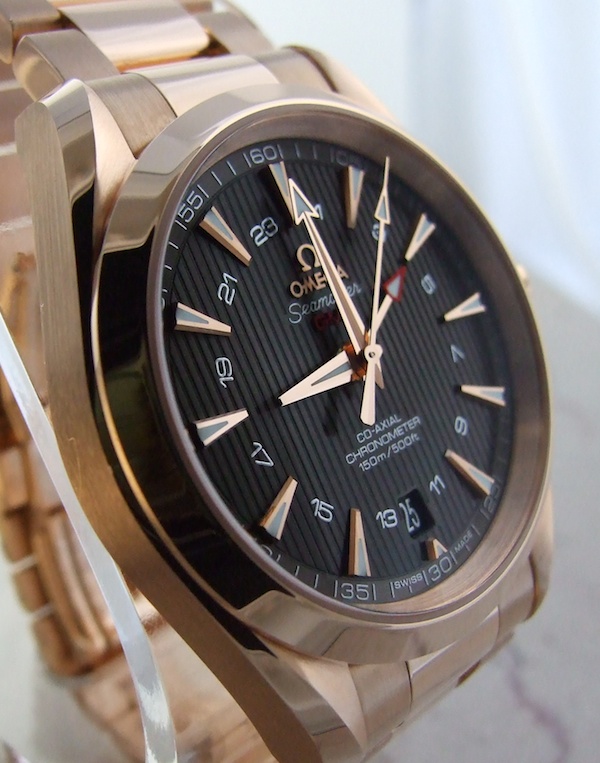Executed in beautiful copper-colored 18 carat gold, we have the Omega Aqua Terra GMT reference 231.50.43.22.06.002 in for review today. Defining the high end of the Aqua Terra GMT series, I was delighted when Omega offered to let me borrow one for review.
Let’s start with the gold. It’s 75% by weight, as you can see by the hallmark on the lugs:
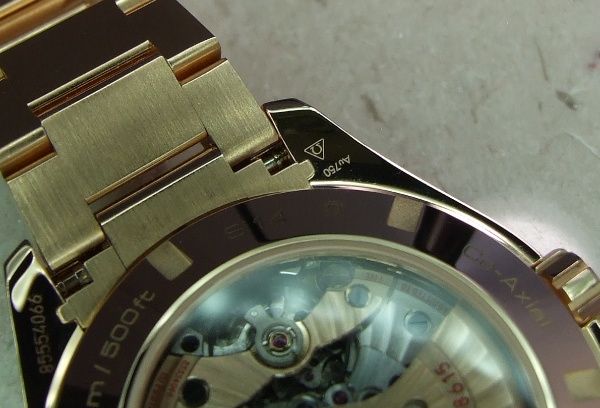 [youtube http://www.youtube.com/watch?v=pP7FFdSMcAc]
[youtube http://www.youtube.com/watch?v=pP7FFdSMcAc]
The case is a blend of brushed and polished finishes, quite striking and very well made. Quality and evenness of finishing is as good as I’ve ever seen, certainly at least as good as my IWC Aquatimer. The center-polish is a compromise of sorts – some shiny bling, but it’ll scratch more quickly than the brushed sections.
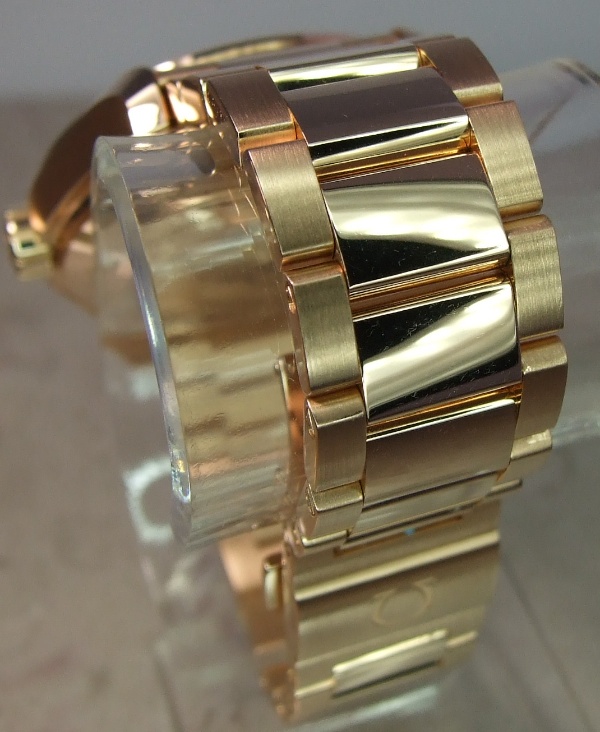
The lugs are in Omega’s lyre shape, quite lovely. You’ll see this in all of the Seamaster line, I think it was introduced in the 1960s and is unique to Omega.
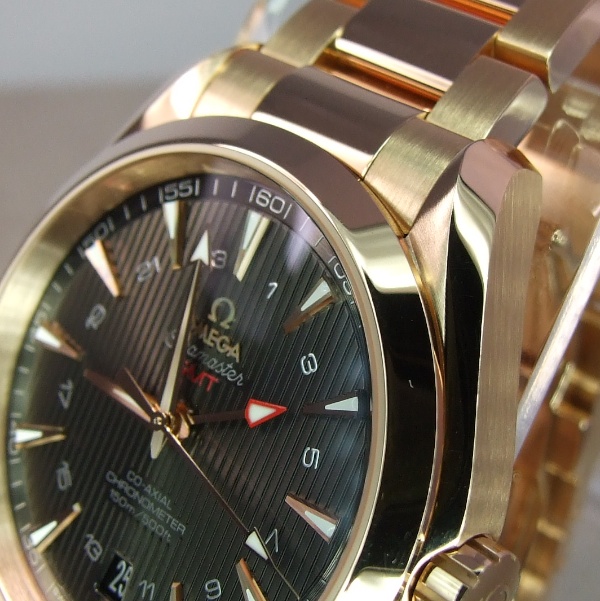
The 6.9mm crown has a polished logo inset into it.
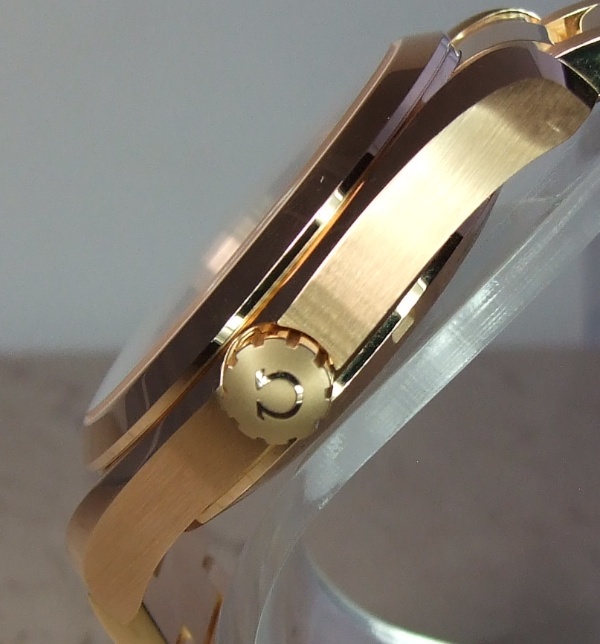
The dial has great visual depth, with what Omega calls their ‘teak pattern,’ meant to evoke the deck of a yacht.
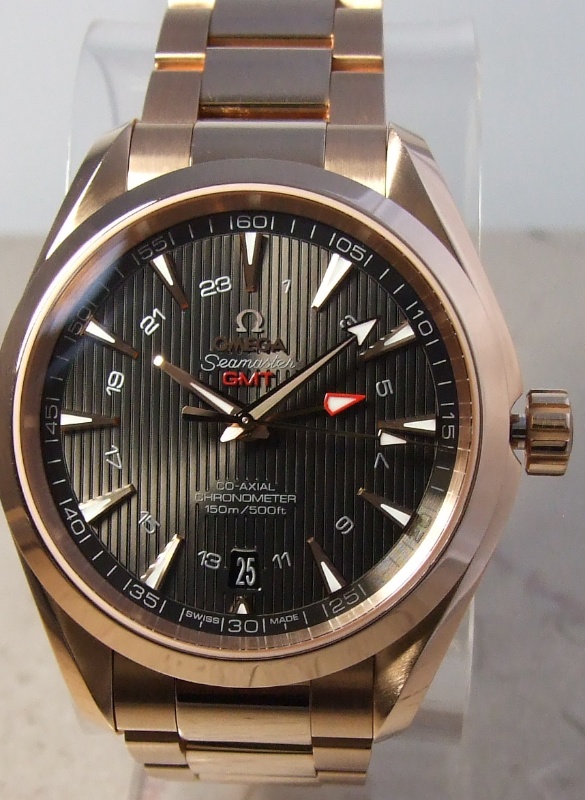
The markers are applied, 18-carat gold, wedge-shaped and inset with lume.
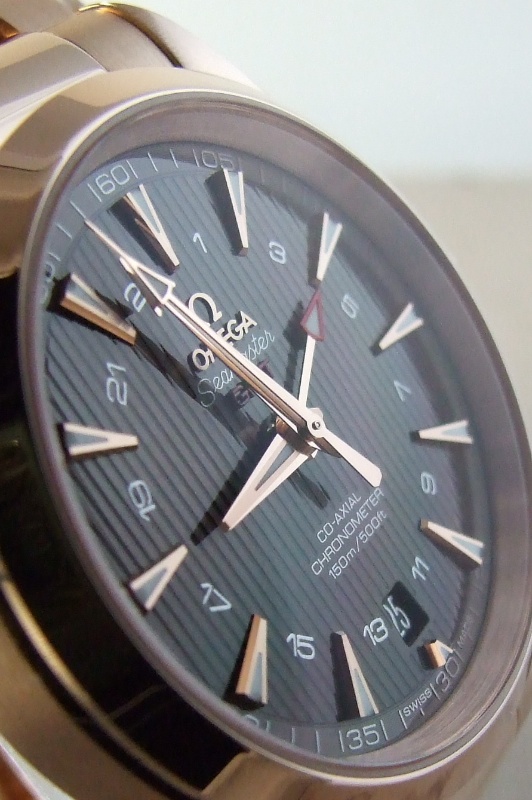
The hands are dual-finish, with frosted centers and polished edges. The combination of dial and hands feels quite luxurious. Notice too, the depth present here – nice tall center cannon pinion, and the markers rising above the surface as you go from the center out. It evokes a small diorama.
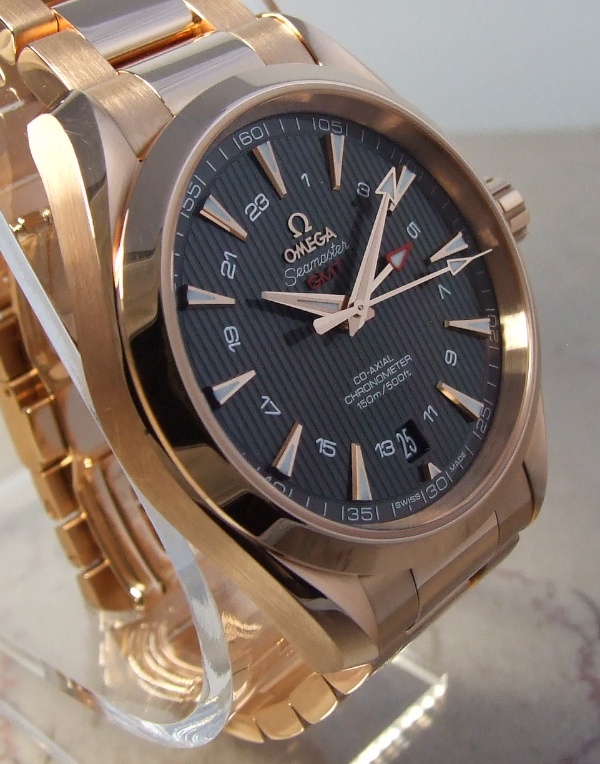
The crown nestles into the integrated shoulders, and is screw-down to achieve the 150m water resistance rating.
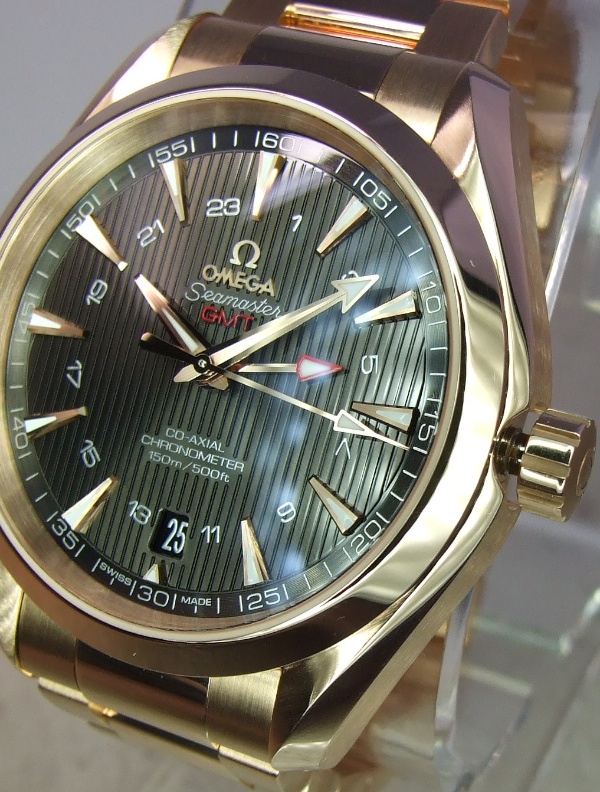
Luminosity is high-grade, though as befits a dress watch, it’s applied in smaller areas than a dive or sport watch.
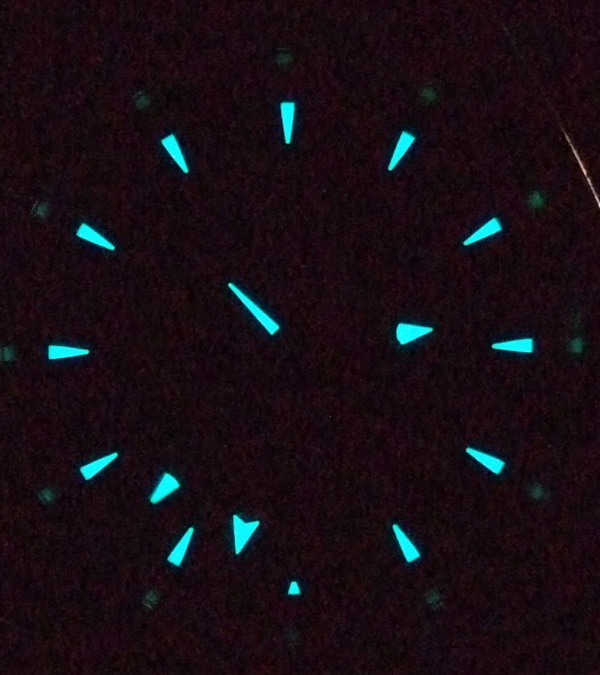
A bit difficult to read, in that the minute hand and GMT hand appear similar.
The movement on this one is actually why I asked to review it. Introduced at BaselWorld this year, it’s quite something.
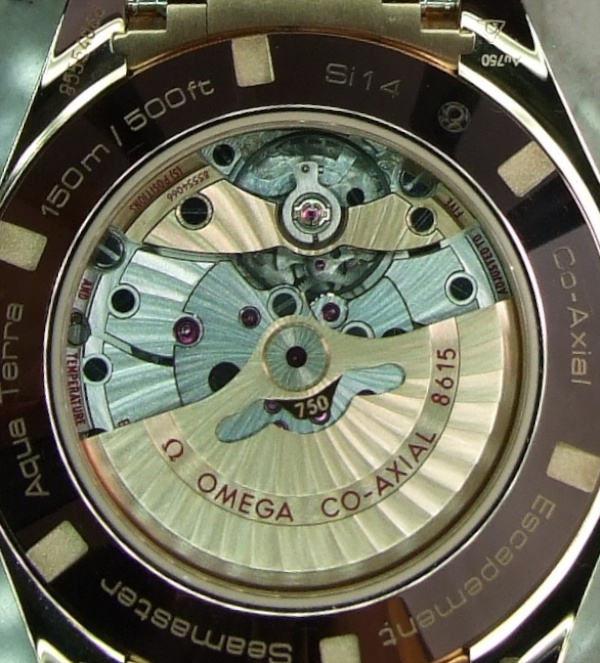
It’s Omega’s in-house 8615, from the co-axial 8500 series with the addition of a proper GMT. This is just fantastic for jet travel. You pull the crown out one stop, and the hour hand goes forwards or backwards in one-hour steps, while the GMT hand stays in place and the seconds continue running. In other words, changing time zones is as easy as a digital quartz. Magnificent indeed.
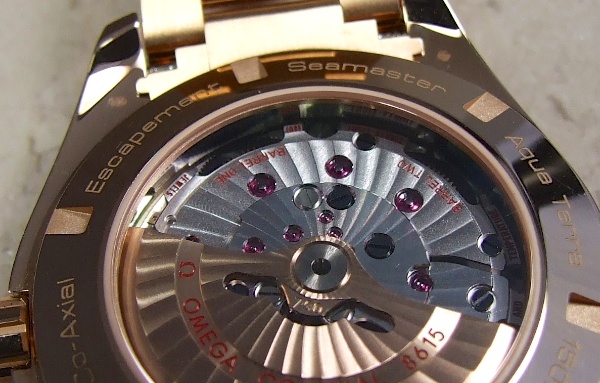
The movement is visually spectacular, with a full balance bridge and rotor both executed in 18k gold, twin barrels, spiral Geneva wave decoration.
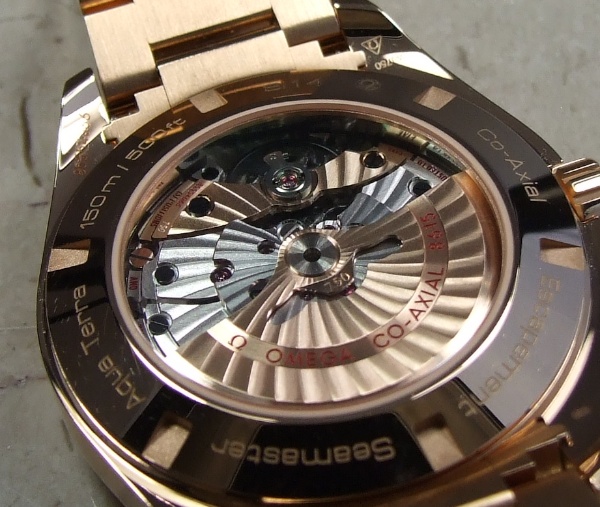
I could stare at that all day. Silicon hairspring too. This is state-of-the-art for production watches. Chronometer spec, naturally, and with twin mainspring barrels, the power reserve is a solid 60 hours. Handwinding is buttery smooth, and the peculiar rate of 25,200 vph is visually indistinguishable from the normal 28,800. One quirk of the movement is that the date is not quick set, you have to cycle forward through days via the hour-jump. A minor nit, to be sure. It is quick-change, though.
The co-axial escapement is the invention of George Daniels, and serves to increase maintenance intervals and improve timekeeping. Omega has been using it since 1999, and their inclusion of an unusual four-year, full-coverage warranty here testifies to their confidence in the system.
The double-domed sapphire crystal has equally state-of-the-art anti-reflective coatings on it, as good as I’ve ever seen. Or not seen.
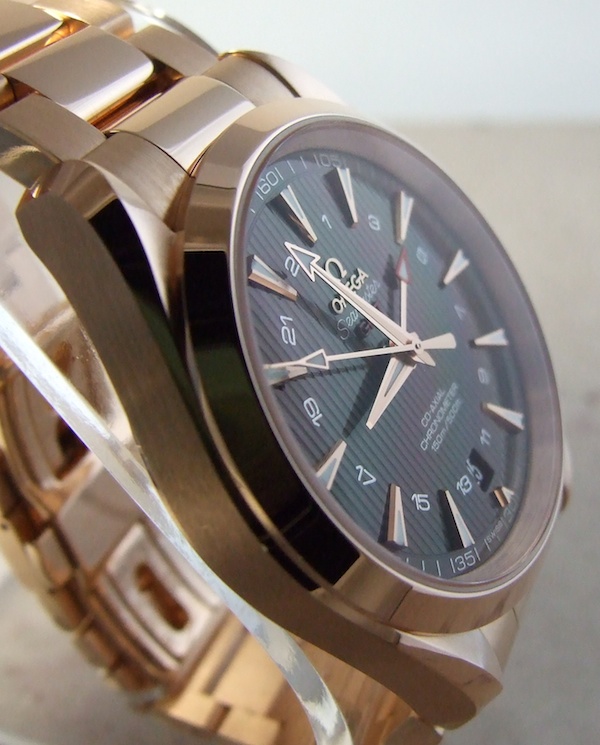
On the wrist, the 250g weight is very noticeable. Gold is heavy.
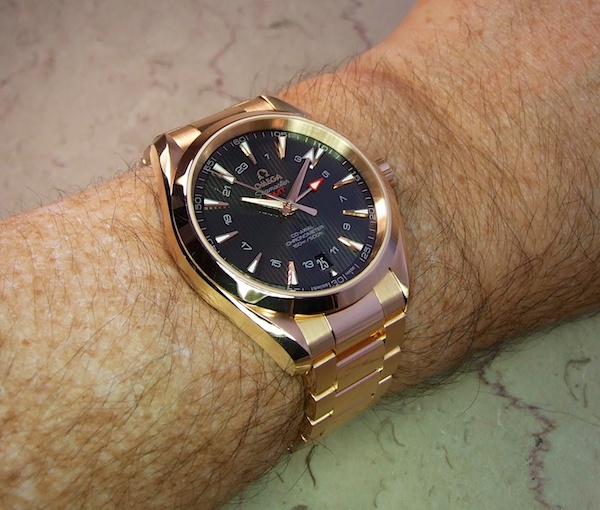
It feels impressively dense. 42.7mm across, 14.2mm thick at the top of the crystal. 20mm lugs, with a bracelet that tapers down to 18mm at the butterfly deployant.
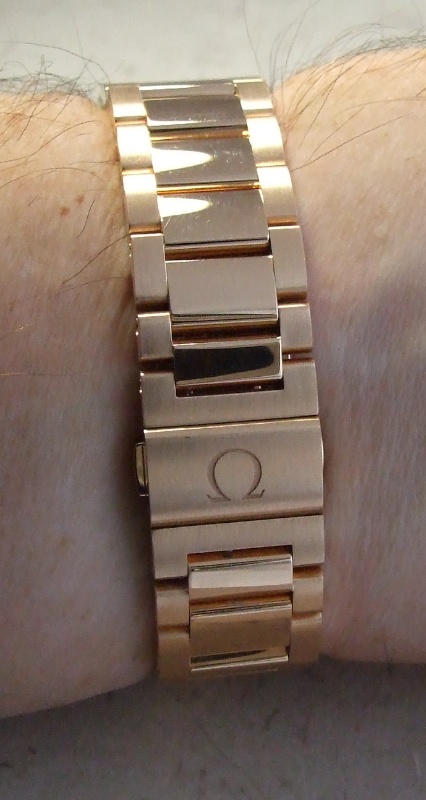
The clasp is interesting in itself – one side is pushbutton, the other side is friction, held in place by two millimeter-sized pieces of Teflon inset into the clasp.
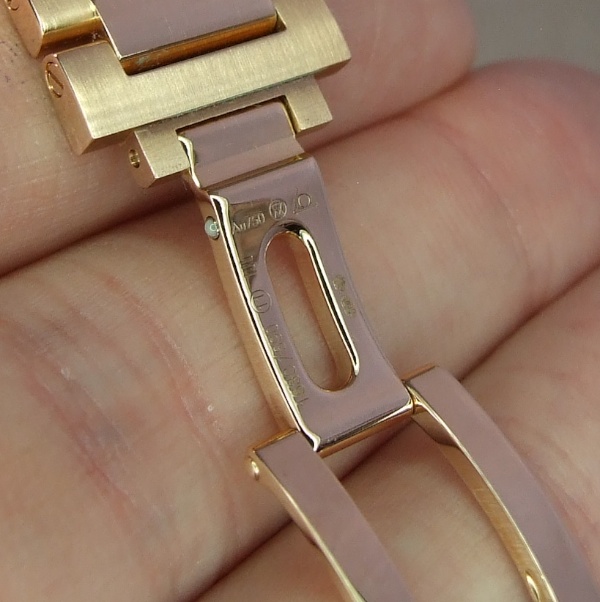
Another view:
The bracelet is also unique – a central steel piece is held in place by gold screws on either end:
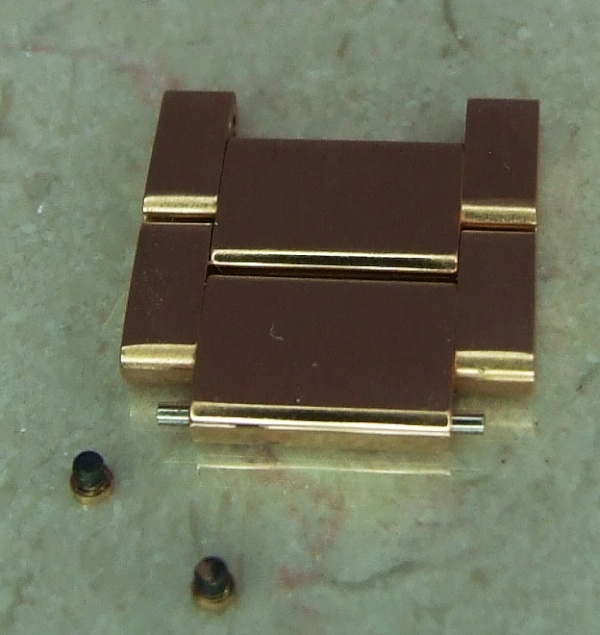
The screws are detailed with Loctite, as you’d expect. It’s not a design I’ve seen anywhere else, but it works very well.
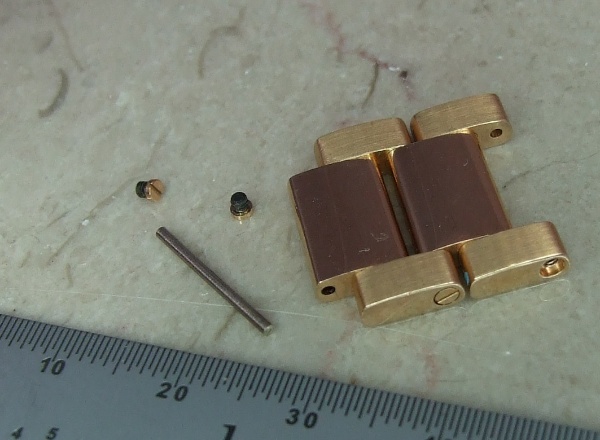
Some more wrist shots on my 7.25″ wrist:
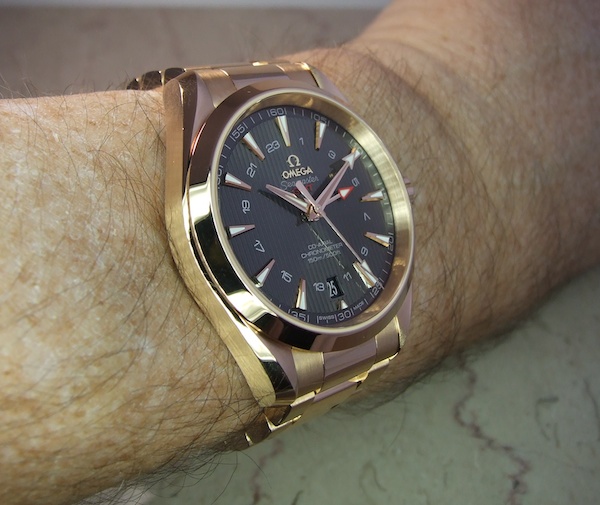
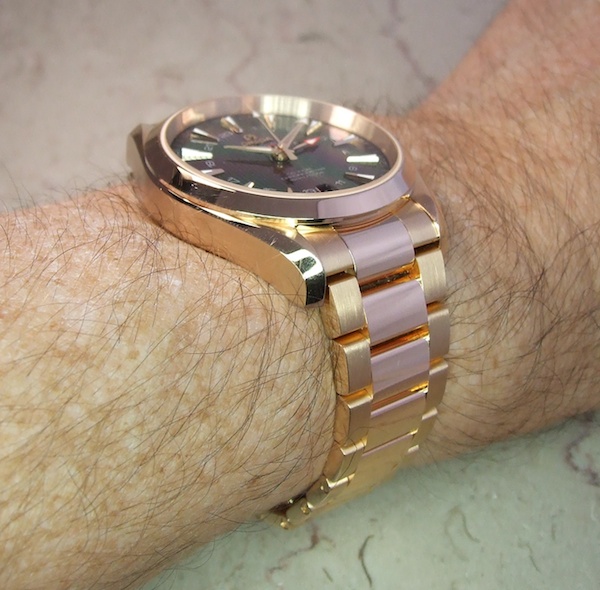
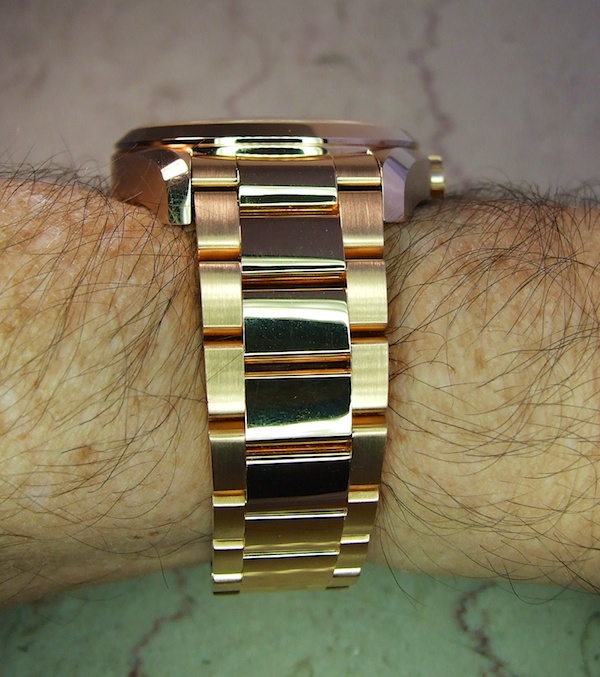
I don’t normally wear solid gold watches, so a week with this one has been a change. I had to work up some courage to size the bracelet, and worried more than usual about not bumping into things. It’s less blingy than yellow or rose gold, but it certainly is attention-getting. A local realtor was noticeably more friendly after she spotted it, which was quite nice.
It’s hard to discuss value on a gold watch. The jewelry aspect is dominant, and of course the material costs orders of magnitude more. I can certainly praise the movement, and suggest that those wanting less bling can find it in steel-cased models as well. If you want a wonderful movement in a first-class jewelry setting, then don’t even break stride on your way past the Rolex shop. The Aqua Terra GMT is your short list. omegawatches.com
Necessary Data
>Brand: Omega
>Model: 231.50.43.22.06.002 Aqua Terra GMT
>Price: 36,000
>Would reviewer personally wear it: I can’t afford it, but were one magically to appear; yes, I sure would.
>Friend we’d recommend it to first
: The wealthy banker who travels frequently
>Worst characteristic of watch: Hard to read at night
>Best characteristic of watch: The movement.

